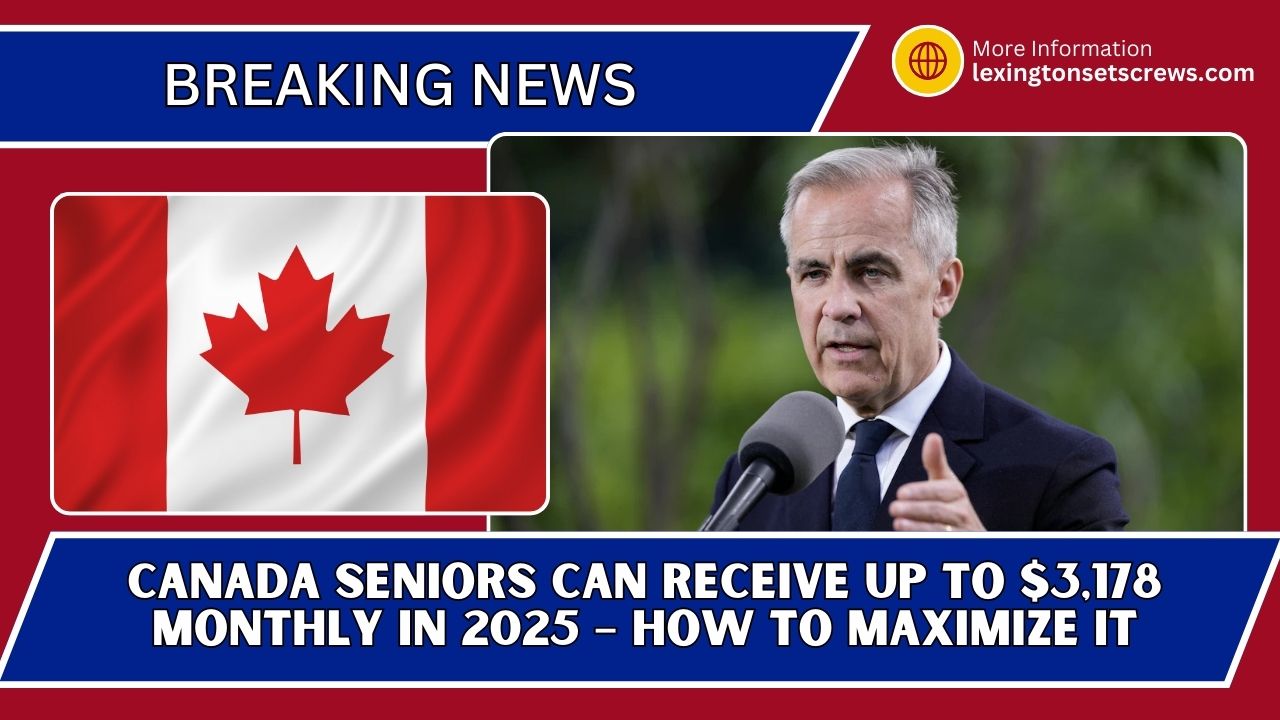Canada Seniors Can Receive Up To $3,178 Monthly In 2025 – How To Maximize It

Retirement in Canada can feel uncertain with rising living costs, healthcare expenses, and housing challenges. To ease this pressure, seniors benefit from three major federal support programs: the Canada Pension Plan (CPP), Old Age Security (OAS), and the Guaranteed Income Supplement (GIS).
In 2025, the maximum combined benefits for seniors who qualify at the highest levels under each program could reach $3,178 per month, or more than $38,000 annually.
While not every retiree will receive this amount, understanding these programs and how to maximize benefits is essential for financial security in later life.
Breaking Down the Benefits
The $3,178 maximum monthly amount in 2025 is calculated by combining three separate income streams.
| Program | Maximum Monthly Benefit (2025) | Key Eligibility Criteria |
|---|---|---|
| Canada Pension Plan (CPP) | $1,364.60 | Must have contributed at maximum pensionable earnings for ~39+ years; benefit starts at age 65 (can be adjusted if delayed or taken early). |
| Old Age Security (OAS) | $713.34 | Full pension requires 40 years of Canadian residency after age 18. Partial pensions available for fewer years. |
| Guaranteed Income Supplement (GIS) | $1,100.44 | Income-tested benefit; only low-income seniors receiving OAS are eligible for the full amount. |
Total possible monthly income: $3,178.38.
Who Can Qualify for the Maximum?
To receive the full $3,178 per month, seniors must:
- Have a full CPP contribution history, achieved by consistently working at or near the maximum pensionable earnings level for nearly four decades.
- Qualify for the full OAS pension, requiring 40 years of Canadian residency after turning 18.
- Earn low enough income to qualify for the maximum GIS benefit. This typically applies to seniors without significant workplace pensions, investments, or other income streams.
Because GIS is income-tested, only seniors with limited financial resources will reach the true maximum.
How to Maximize Your Retirement Benefits
Seniors can take several steps to improve their retirement income:
- Delay CPP and OAS – Deferring CPP up to age 70 increases payments by 8.4% per year delayed. OAS grows by 7.2% per year delayed.
- Maximize CPP Contributions – Consistently earning and contributing at or above the yearly maximum pensionable earnings ensures higher benefits.
- Ensure OAS Residency – New Canadians and those with time abroad should carefully review residency requirements to qualify for the full OAS.
- Apply for GIS – Eligible low-income seniors should apply, as GIS adds over $1,100 monthly in 2025.
These strategies can help retirees approach the highest possible combined benefit.
Why These Benefits Matter
With inflation driving up the cost of groceries, rent, transportation, and healthcare, many seniors depend heavily on government benefits. CPP, OAS, and GIS provide a predictable and stable income stream in retirement.
These programs also play a crucial role in reducing senior poverty. Without them, a significant portion of Canada’s elderly population would struggle to afford daily essentials.
Challenges for Seniors in 2025
Despite the possibility of $3,178 per month, most seniors receive far less:
- The average CPP payment in 2025 is around $860 per month, not the maximum.
- Many seniors don’t qualify for full OAS due to shorter residency periods.
- GIS applies only to seniors with very low income, limiting its availability.
On average, most Canadian seniors earn between $1,600 and $2,000 per month from federal pensions—far below the theoretical maximum.
Additionally, CPP and OAS are taxable, reducing net take-home income depending on total earnings.
Planning Ahead for Retirement Security
For those still working, planning ahead is key to maximizing benefits:
- Track and maximize CPP contributions throughout your career.
- Ensure long-term Canadian residency for full OAS entitlement.
- Apply for GIS promptly if eligible at 65.
- Supplement government programs with RRSPs, TFSAs, or workplace pensions.
While $3,178 is a helpful benchmark, relying solely on public pensions may not cover all expenses in retirement. Building personal savings and investments remains essential.
The potential for Canadian seniors to receive up to $3,178 monthly in 2025 under CPP, OAS, and GIS highlights the strength of Canada’s retirement system. However, it’s important to recognize that most retirees will not reach this maximum.
Instead, the average income is closer to $1,600–$2,000 monthly, depending on career contributions, residency, and income levels.
Still, by strategically planning contributions, delaying benefits, ensuring residency, and applying for GIS, retirees can maximize what they receive. Combined with personal savings, these benefits form a critical safety net that allows seniors to live with dignity and security in retirement.
FAQs
What is the maximum monthly pension income a Canadian senior can receive in 2025?
Eligible seniors can receive up to $3,178 per month by combining CPP, OAS, and GIS at maximum levels.
Do all seniors get the maximum amount?
No. Only those with full CPP contributions, full OAS residency, and low incomes that qualify for GIS will reach the full $3,178.
Is GIS taxable like CPP and OAS?
No. GIS is non-taxable, but CPP and OAS are taxable and must be reported as income.